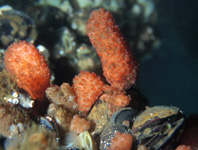Abstract
The higher-level classification of the New World blackbirds (Icteridae; Aves) has remained relatively stable for nearly a half-century, with most currently used classifications (e.g. Sibley & Monroe 1990; Jaramillo & Burke 1999; Fraga 2011; Remsen et al. 2015) following Blake’s (1968) delimitation and sequence of genera in the Peters Check-list of Birds of the World series. Early molecular studies (e.g., Lanyon 1992, 1994; Johnson & Lanyon 1999; Price & Lanyon 2002; Cadena et al. 2004) produced only minor modifications.
References
American Ornithologists’ Union [AOU] (1998) Check-list of North American Birds, 7th edition. American Ornithologists' Union, Washington, D.C., 829 pp.
Barker, F.K., Burns, K.J., Klicka, J., Lanyon, S.M. & Lovette, I.J. (2013) Going to extremes: contrasting rates of diversification in a recent radiation of New World passerine birds. Systematic Biology, 62, 298–320.
Beecher, W.J. (1952) Pendulinus a prior name for nectar-adapted orioles. Wilson Bulletin, 64, 115.
Beecher, W.J. (1950) Convergent evolution in the American orioles. Wilson Bulletin, 62, 51–86.
Blake, E.R. (1968) Family Icteridae. In: Paynter, R.A. Jr. (Ed), Check-list of Birds of the World, Vol. 14. Museum of Comparative Zoology, Cambridge, Massachusetts, pp. 138–202.
Bock, W.J. (1994) History and nomenclature of avian family-group names. Bulletin of the American Museum of Natural History, 222, 1–281.
Bonaparte, C-L. (1853) Classification ornithologique par séries. Comptes Rendus Hebdomadaires des Séances de l'Académie des Sciences, 37, 641–647.
Cadena, C.D., Cuervo, A.M. & Lanyon, S.M. (2004) Phylogenetic relationships of the Red-bellied Grackle (Icteridae: Hypopyrrhus pyrohypogaster) inferred from mitochondrial DNA sequence data. Condor, 106, 664–670.
Chenu, J.C. & Des Murs, O. (1853). Oiseaux. In: Chenu, J.C. (Ed), Encyclopedie d'Histoire Naturelle, Vol. 1. Marescq & Compagnie, Paris, pp. 1–312.
Desmarest, E. (1857) Table alphabétique des noms vulgaires et scientifiques. Oiseaux. Pp. 1–79 in Chenu, J.C. & Des Murs, O. Encyclopédie d’Histoire Naturelle ou Traité complet de cette Science. Oiseaux, part 6. G. Havard, Paris, 312 pp.
Dickinson, E.C. & Remsen, J.V., Jr. (Eds) (2013) The Howard and Moore Complete Checklist of the Birds of the World. Vol. 1. Non-passerines. Aves Press, Eastbourne, U.K., 461 pp.
Dickinson, E.C. & Christidis, L. (Eds) (2014) The Howard and Moore Complete Checklist of the Birds of the World. Vol. 2. Passerines. Aves Press, Eastbourne, U.K., 752 pp.
Drummond, A.J., Suchard, M.A., Xie, D. & Rambaut, A. (2012) Bayesian phylogenetics with BEAUti and the BEAST 1.7. Molecular Biology and Evolution, 29, 1969–1973.
Fraga, R.M. (2005) A new generic name for the Solitary Cacique. Bulletin of the British Ornithologists’ Club, 125, 286−287.
Fraga, R.M. (2011) Family Icteridae (New World blackbirds). In: del Hoyo, J., Elliott, A., & Christie, D.A. (Eds), Handbook of the Birds of the World, Vol. 15. Tanagers to New World Blackbirds. Lynx Edicions, Barcelona, pp. 684−807.
Hellmayr, C.E. (1938) Catalogue of Birds of the Americas. Field Museum Natural History Publications, Zoological Series, vol. 13, pt. 11.
ICZN [International Commission on Zoological Nomenclature] (1999) International Code of Zoological Nomenclature. The International Trust for Zoological Nomenclature, c/o The Natural History Museum, London, 306 pp.
Jaramillo, A. & Burke, P. (1999) New World Blackbirds. Princeton University Press, Princeton, New Jersey, 431 pp.
Johnson, K.P. & Lanyon, S.M. (1999) Molecular systematics of the grackles and allies, and the effect of additional sequences (CYT B and ND2). Auk, 116, 759–768.
Lanyon, S.M. (1992) Interspecific brood parasitism in blackbirds (Icterinae): a phylogenetic perspective. Science, 255, 77–79.
Lanyon, S.M. (1994) Polyphyly of the blackbird genus Agelaius and the importance of assumptions of monophyly in comparative studies. Evolution, 48, 679–693.
Lanyon, S.M. & Omland, K.E. (1999) A molecular phylogeny of the blackbirds (Icteridae): five lineages revealed by cytochrome-b. Auk, 116, 629−639.
Lowther, P.E., Fraga, R., Schulenberg, T.S. & Lanyon, S.M. (2004) Nomenclatural solution for a polyphyletic Agelaius. Bulletin of the British Ornithologists’ Club, 124, 171−177.
Omland, K.E. & Lanyon, S.M. (2000) Reconstructing plumage evolution in orioles (Icterus): repeated convergence and reversal in patterns. Evolution, 54, 2119–2133.
Powell, A.F.L.A., Barker, F.K., Lanyon, S.M., Burns, K.J., Klicka, J. & Lovette, I.J. (2014) A comprehensive species-level molecular phylogeny of the New World blackbirds (Icteridae). Molecular Phylogenetics and Evolution, 71, 94–112.
Price, J.J. & Lanyon, S.M. (2002) A robust phylogeny of the oropendolas: polyphyly revealed by mitochondrial sequence data. Auk, 119, 335−348.
Price, J.J. & Lanyon, S.M. (2004) Patterns of song evolution and sexual selection in the oropendolas and caciques. Behavioural Ecology, 15, 485–497.
Remsen, J.V. Jr., Areta, J.I., Cadena, C.D., Jaramillo, A., Nores, M., Pacheco, J.F., Pérez-Emán, J., Robbins, M.B., Stiles, F.G., Stotz, D.F. & Zimmer, K.J. (2015) A classification of the bird species of South America. American Ornithologists' Union. Available from: http://www.museum.lsu.edu/~Remsen/SACCBaseline.htm (Accessed 17 Mar. 2016)
Ridgway, R. (1902) The Birds of North and Middle America. Bulletin U.S. National Museum, no. 50, pt. 2. Washington, D.C., 834 pp.
Sclater, P.L. (1886) Catalogue of the Birds of the British Museum, Vol. XI. British Museum (Natural History), London, 431 pp.
Short, L.L. (1968) Sympatry of red-breasted meadowlarks in Argentina, and the taxonomy of meadowlarks. American Museum Novitates, 2349, 1–30.
Short, L.L. & Bock, W.J. (1970) [Correspondence.] Auk, 87, 209.
Sibley, C.G. & Monore, B.L. (1990) Distribution and Taxonomy of Birds of the World. Yale University Press, New Haven, Connecticut, 1111 pp.
Swainson, W. & Richardson, J. (1831) Fauna Boreali-Americana or the Zoology of the Northern Parts of British America: Part Second, the Birds. John Murray, London, 523 pp.
Vigors, N.A. (1825) On the arrangement of the genera of birds. The Zoological Journal, London, 2, 391–405.
Webster, J.D. (2003) Skeletal characters and the genera of blackbirds (Icteridae). Condor, 105, 239−257.
Zimmer, J.T. (1926) Catalogue of the Edward E. Ayer ornithological library. Field Museum of Natural History Zoological Series, 16, 1–706.

